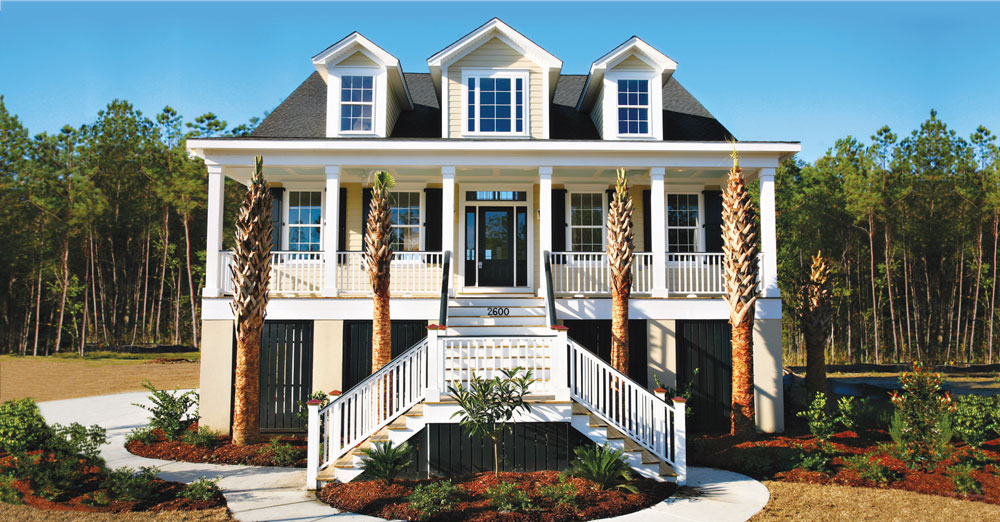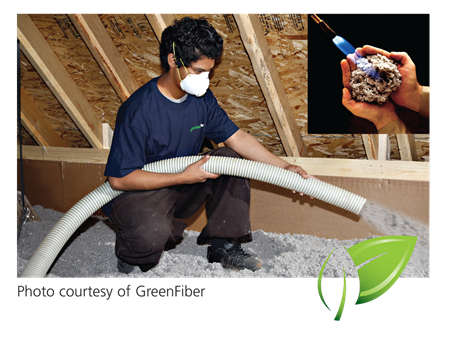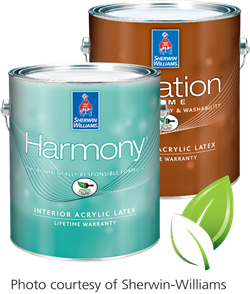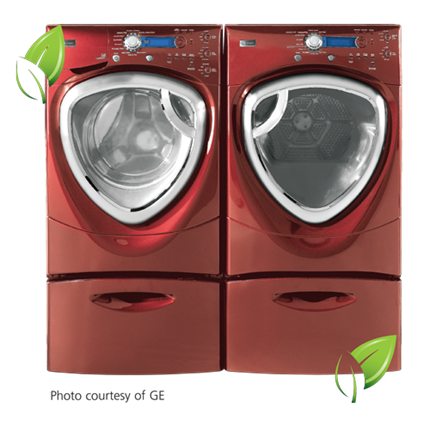Building Green: What does it mean...and why you should consider it
.aspx?width=500&height=566) Nowadays it seems that all sorts of products and services claiming “green” status are popping up everywhere. In the homebuilding industry, quite a few of the green construction processes are not only environmentally friendly; they are also friendly to your wallet. But, what does it really mean to be green?
Nowadays it seems that all sorts of products and services claiming “green” status are popping up everywhere. In the homebuilding industry, quite a few of the green construction processes are not only environmentally friendly; they are also friendly to your wallet. But, what does it really mean to be green?
According to the U.S. Environmental Protection Agency (EPA) – Green building means improving the way that homes and homebuilding sites use energy, water, and materials to reduce impacts on human health and the environment. Building a green home means making environmentally preferable and sustainable decisions throughout the building process — decisions that will minimize the environmental impact of the home while it is being built and over the many years it will be lived in.
While support for this evolving concept has almost become a given, there are some misconceptions about going green, and there many different levels of green. What should home buyers look for in a green home? Look to the benefits. Look to the features and products. Look to the true cost of home ownership. Look to the opportunities.

Green Building Benefits
Owning an environmentally friendly home does not mean you have to make sacrifices. On the contrary, these homes are some of the highest-performing, most durable and efficient homes you can buy. Green homes conserve resources and energy while improving air and water quality. In addition to taking care of the environment and living in more healthful surroundings, you’ll enjoy the financial savings related to lower operating and repair costs. All of these benefits ultimately enhance your comfort, as well as the home’s durability and livability.

Green Building Features and Products
Many features and products that are considered green are on the market now and are designed to save in many ways. Consider implementing some or all of the following:
- Energy-efficient windows and doors: Energy efficient windows and doors employ advanced technologies, such as protective coatings and improved frame assemblies, to help keep heat in during the winter and out during the summer. These windows also block damaging ultraviolet sunlight that can discolor carpets and furnishings.
- High-efficiency heating and cooling: In addition to using less energy to operate, high-efficiency heating and cooling systems can be quieter, reduce indoor humidity, and improve the overall comfort of the home. Energy-efficient equipment is typically more durable and requires less maintenance than standard models.
- Adequate insulation and home sealing: Properly installed, climate-appropriate insulation in floors, walls, and attics ensures even temperatures throughout the house, less energy consumption, and increased comfort.
 ENERGY STAR appliances and lighting:
ENERGY STAR appliances and lighting:
ENERGY STAR-qualified homes may be equipped with ENERGY STAR Rated appliances such as refrigerators, dishwashers, washing machines, and fans, providing substantial energy savings to the owner.
For even greater savings, many homeowners are implementing such energy-conserving devices as the following:
- Tankless water heater
- Programmable thermostat
- Compact fluorescent lighting
- Energy-saving home electronics
- Photovoltaic solar cells
(In some cases federal and state tax credits and rebates for buying and using energy-efficient products are available. Be sure to ask.)

Eco-friendly Materials
In addition to green products and features, materials that go into the actual construction of a new home are designed to minimize the use of nonrenewable resources and provide savings as well. Following is a list of favored materials:
- Cellulose attic insulation is made from recycled newspaper and sprayed in for superior sealing. This insulation saves energy and is generally fire retardant.
- Recycled-content carpet, commonly known as “pop bottle carpet,” uses plastic and recovered textiles and is more resilient and colorfast than conventional carpet.
- The wood of rapidly self-renewing trees such as lyptus (a fast-growing eucalyptus that looks like cherry or mahogany), cork, and bamboo provides attractive flooring options to wood from old-growth forests that take years to replenish.
- Engineered structural wood products are manufactured from fast-growing trees and recycled wood chips.
Healthy Indoor Living
It is especially important to create and maintain a healthy home environment for anyone with allergies or heightened sensitivity to noxious odors or pollutants, and today’s consumers are becoming more attuned to these issues. Sealing cracks in the home’s “envelope” and duct systems helps reduce drafts, moisture, dust, pollen, and noise. A tightly sealed home improves comfort and indoor air quality while reducing utility bills. Here are a few highly effective product solutions for a healthy home:
- Low- or no-VOC (volatile organic compounds) paint
- Central dehumidification to reduce mold and mildew
- Central air purification and ventilation systems
- Central vacuum system
- Flooring that doesn’t harbor dust
Water-Saving Products and Techniques
The main water issues in the home are purification and conservation. Great strides have been made in both areas in recent years and have attracted consumer interest. Here are a few examples:
- Water-efficient appliances such as a front-loading washing machine, tankless water heater, and low-flow showerheads and toilets
- Water purification devices and reverse osmosis systems
- Permeable pavement that reduces runoff by letting rainwater seep through, allowing the soil underneath to act as a natural filter
- Drought-tolerant plants that enable owners to save time and money that would otherwise be spent on irrigation

The True Cost of Home Ownership
Today’s home buyers want to get the most house for their money. In addition to paying a monthly mortgage, they will also have to budget for utilities, maintenance, and repairs. All of these factors must be taken into consideration when determining the true cost of home ownership, which essentially determines the affordability of any given home. A durable, energy-efficient house can actually be more economical and affordable — even if the initial asking price is a bit higher than that of a home built using standard construction practices.
In an energy-efficient green home, the first month’s utility bills clearly show the savings. Some green homes, such as those that are EarthCraft House™ certified, realize as much as a 30% increase in energy efficiency, which can result in a reduction of over 1100 pounds of greenhouse gases introduced into the atmosphere each year. EarthCraft homes can also conserve water and reduce storm water pollution, while promoting recycling and the use of durable, low-maintenance, recycled, and rapidly renewable materials.
ENERGY STAR Rated homes achieve energy savings through established, reliable building technologies, to save homeowners at least 15% on energy costs. Builders work with Home Energy Raters to select from a number of features when planning and building homes. All EarthCraft-certified homes must meet established EPA standards to be verified as ENERGY STAR Rated.
In addition to savings on utilities, there are specialized mortgages to assist home buyers who choose to go green. If a home is certified as energy efficient, lenders may take this into account when determining how much mortgage you can afford.
Money projected to be saved due to reduced utility bills in a higher quality home can offset a larger monthly mortgage payment. There are numerous reasons to consider going green. However, the bottom line for many buyers is that going green helps to save the planet with savings them money … and that’s a shade of green that everyone can appreciate.
For more information on green building please visit the following:
www.Earthcrafthouse.com
www.eere.energy.gov
www.energy.gov/yourhome.htm
www.energystar.gov/homes
www.resnet.us/ratings/overview/default.htm
Photo courtesy of GE
Photos courtesy of GreenFiber
Photo Courtesy of GWD/Trane
Photo courtesy of Rinnai America Corporation
Photo courtesy of Sherwin-Williams